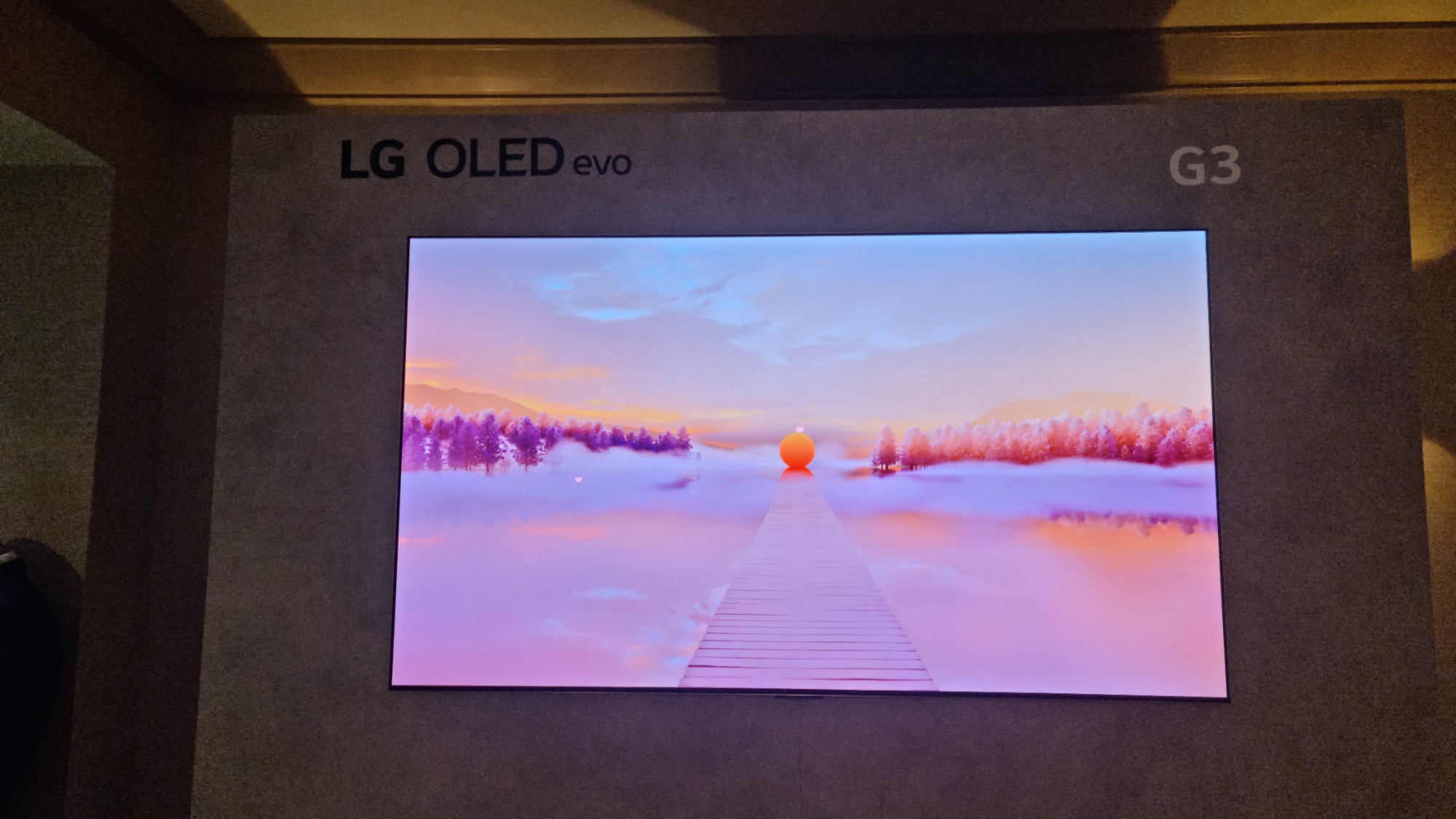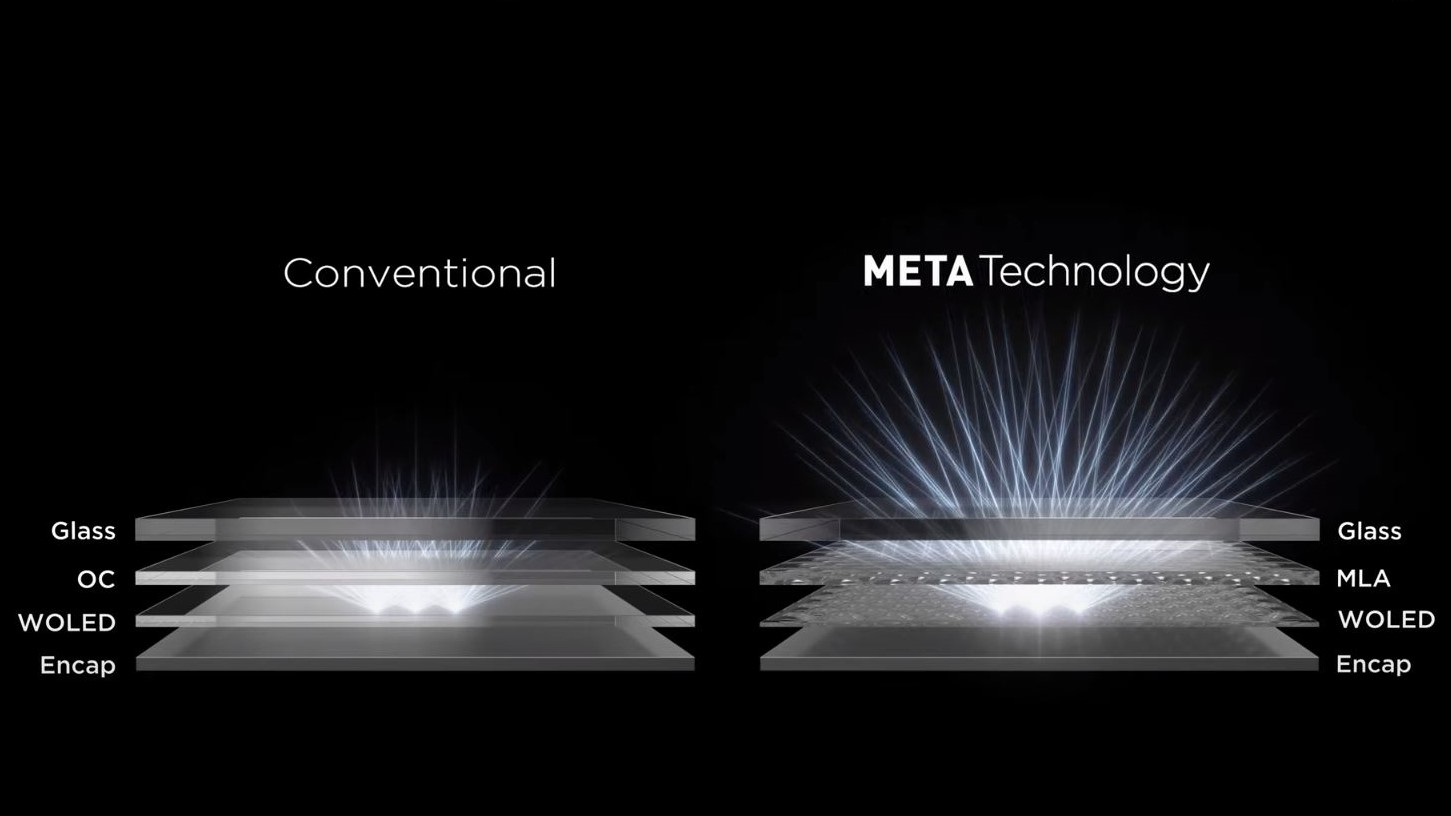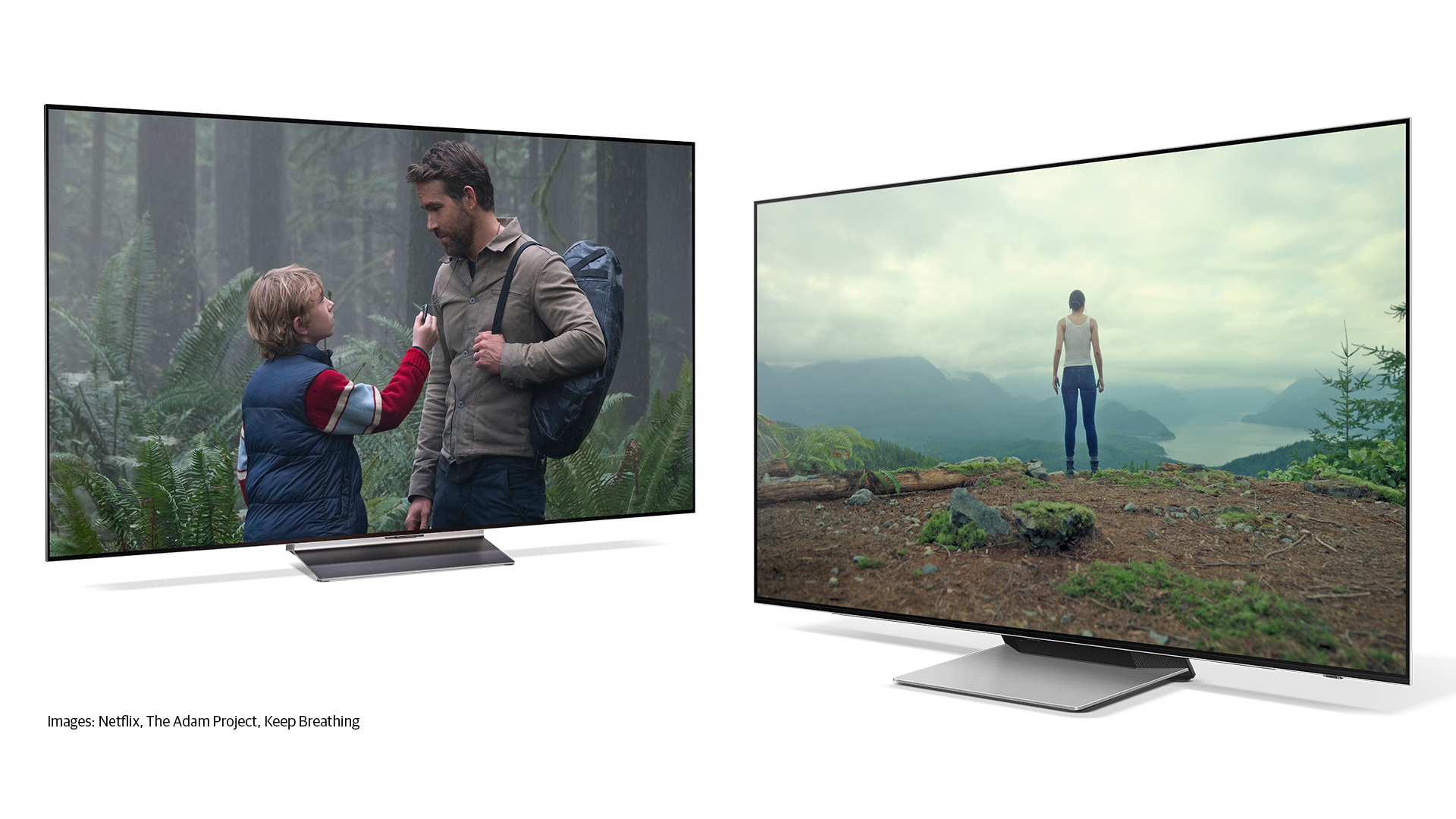LG confirms that its G3 OLED will hit over 2000 nits, but not in all sizes
Nearly 1500 nits in HDR Cinema mode, too

While LG is just as prone to making grand claims as the next TV brand, it's traditionally very reluctant to reveal hard performance figures and hardware details. It's a massive surprise, then, that in a recent video briefing, LG's David Seperson revealed specific peak brightness figures for the new G3, which will be the brightest OLED TV the company has ever produced – and by a long way.
The headline is that the TV will apparently be capable of hitting a peak brightness figure of "roughly" 2040 nits. This will specifically be in the HDR Vivid picture mode and is measured using a 3 per cent window – i.e. a pure white block that's 3 per cent the size of the whole screen, with the rest being pure black.
A Vivid / Dynamic picture mode is great for illustrating the extremes that a TV is capable of, thanks to its cool but bright balance, but it's generally a long way from being authentic to the source material. Thankfully, Seperson also provided the peak brightness figure of the G3 in its calibrated HDR Cinema mode, which is intended to deliver a more authentically cinematic experience. That figure is 1470 nits, again recorded on a 3 per cent window.
That might sound like a lot less than the headline 2040-nit figure, but it's vastly brighter than the G2 it replaces, which topped out at under 1000 nits in the same mode.
Crossing the 1000-nit barrier is also a big deal because it's the point at which many HDR movies are mastered for the home. A TV capable of displaying brighter images than that should be able to reproduce the source material without compressing its brightest highlights.
MLA tech confirmed, but not for all models

The big jump in OLED brightness this year is thanks to the introduction of Micro Lens Array (MLA) technology, which consists of a layer of tiny lenses that focus the light from the OLED materials in order to create a brighter display without the need to drive said OLEDs any harder.
LG Display, the panel-manufacturing arm of LG that supplies all of the panels to manufacturers of traditional OLED TVs (as opposed to QD-OLED TVs), has confirmed that MLA has been added to its third-generation panels, which it refers to as "META" panels. Panasonic and Philips have also confirmed that their 2023 flagship OLED TVs (the MZ2000 and OLED908 respectively) use MLA-boosted META panels. LG, though, has always refused to be that specific.
Get the What Hi-Fi? Newsletter
The latest hi-fi, home cinema and tech news, reviews, buying advice and deals, direct to your inbox.
That has now changed, with David Seperson confirming that the G3 does indeed use MLA technology – at least in some sizes. "All G3 TVs have Brightness Booster Max, which is a combination of both hardware that we call 'light control architecture', and software that we call 'light boosting algorithms', allowing the G3 OLED Evos to be brighter," he says. "The hardware that's in each size of the G3 differs, and in some sizes, MLA is part of that hardware solution."
The obvious follow-up question is; which sizes of the G3 feature MLA and which do not? Seperson wouldn't answer the question directly but did say this:
"The 55, the 65 and the 77 [versions of the G3] are 70 per cent brighter, the 83 is 30 per cent brighter."
It doesn't take a genius, therefore, to work out that the 83-inch version of the G3 is the only one that doesn't feature MLA technology. That makes sense, because LG Display has so far only confirmed that it's producing META panels in 55, 65, and 77 inches.
Not the only super-bright OLED in town

As mentioned, Panasonic and Philips have confirmed that they'll be launching OLED TVs that use LG's MLA-boosted META panels this year, but there's QD-OLED to consider too.
Manufactured by Samsung Display (the panel-producing arm of the Samsung company) and launched last year in the Samsung S95B and Sony A95K TVs, QD-OLED combines OLED technology with Quantum Dots for a more vibrant and brighter performance than could be offered by traditional OLED TVs at the time. OLEDs with MLA technology look set to surpass the brightness offered by those first-generation QD-OLED TVs, but second-gen QD-OLEDs – most notably the Samsung S95C – are on the way this year and are expected to hit peak brightness figures that are very similar to those being touted by LG for the G3.
In short, traditional OLEDs and QD-OLEDs should be going toe-to-toe in terms of brightness this year. Of course, we're not going to rely on any manufacturer's claims when it comes to TV performance, and we'll only reveal our verdicts on these sets when we've had them all into our test labs for comprehensive, comparative reviews, but it's already shaping up to be a bumper, super-bright year for OLED TVs.
MORE:
Here are the best TVs you can buy right now
This is everything you need to know about QD-OLED
Just in: our hands-on Samsung S95C QD-OLED review
Tom Parsons has been writing about TV, AV and hi-fi products (not to mention plenty of other 'gadgets' and even cars) for over 15 years. He began his career as What Hi-Fi?'s Staff Writer and is now the TV and AV Editor. In between, he worked as Reviews Editor and then Deputy Editor at Stuff, and over the years has had his work featured in publications such as T3, The Telegraph and Louder. He's also appeared on BBC News, BBC World Service, BBC Radio 4 and Sky Swipe. In his spare time Tom is a runner and gamer.

